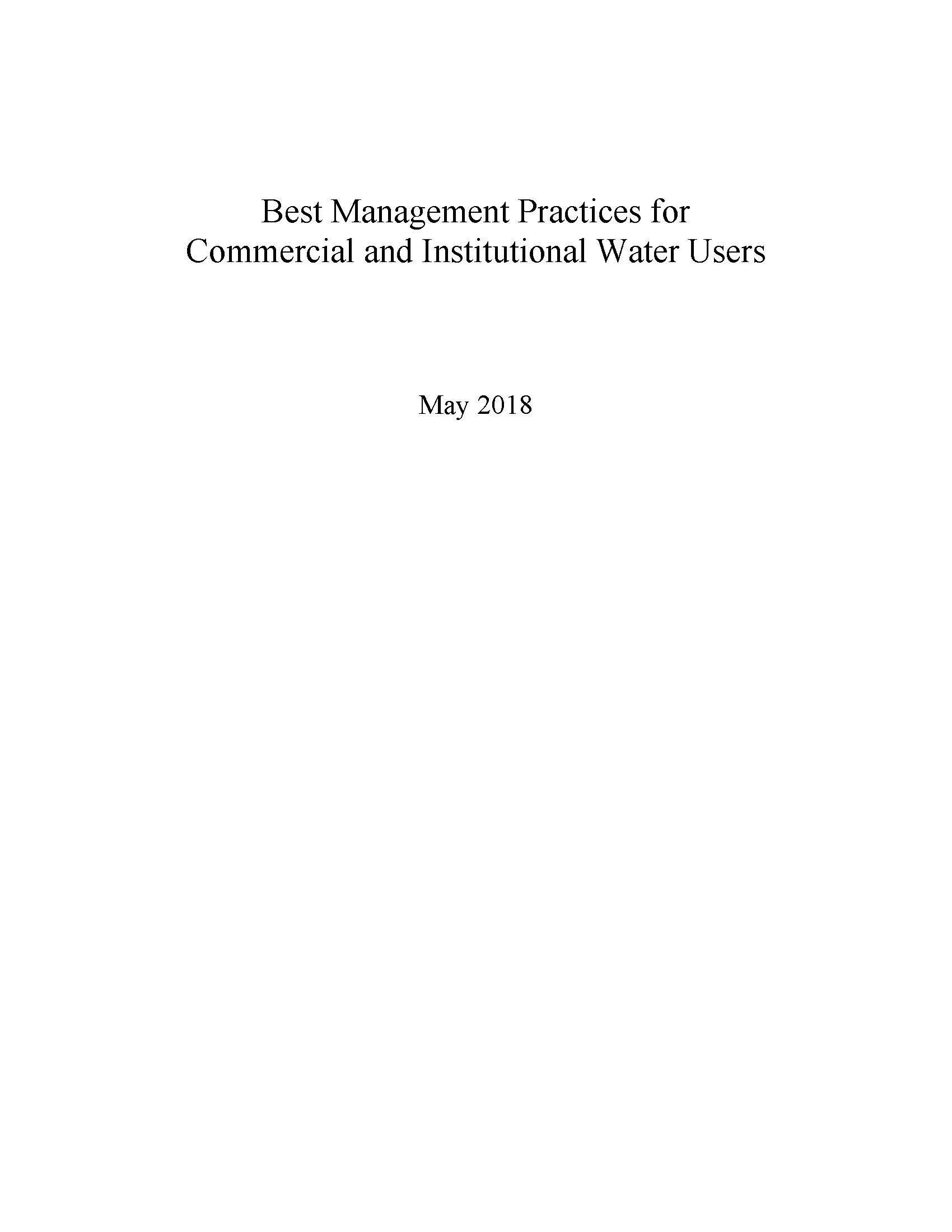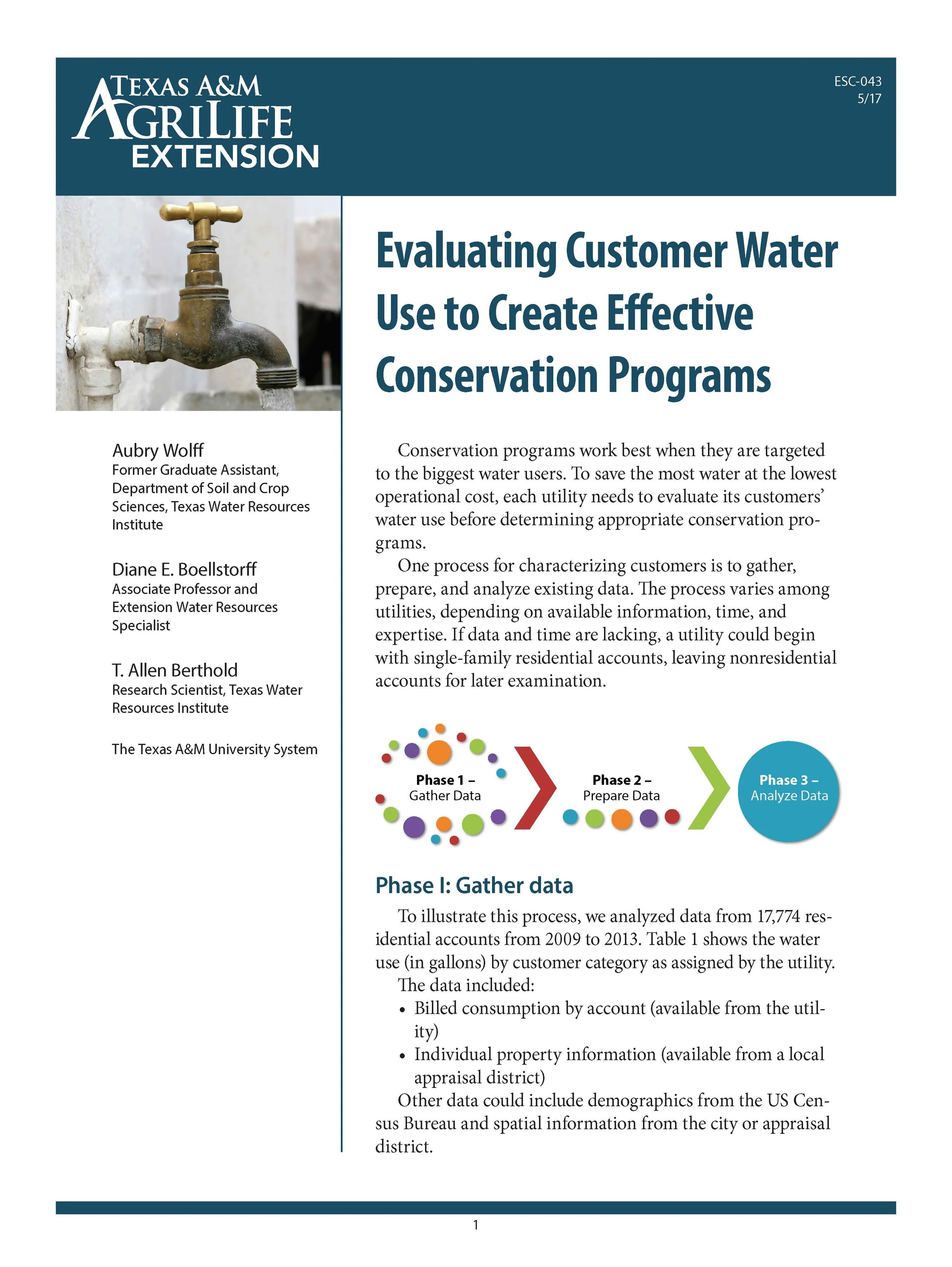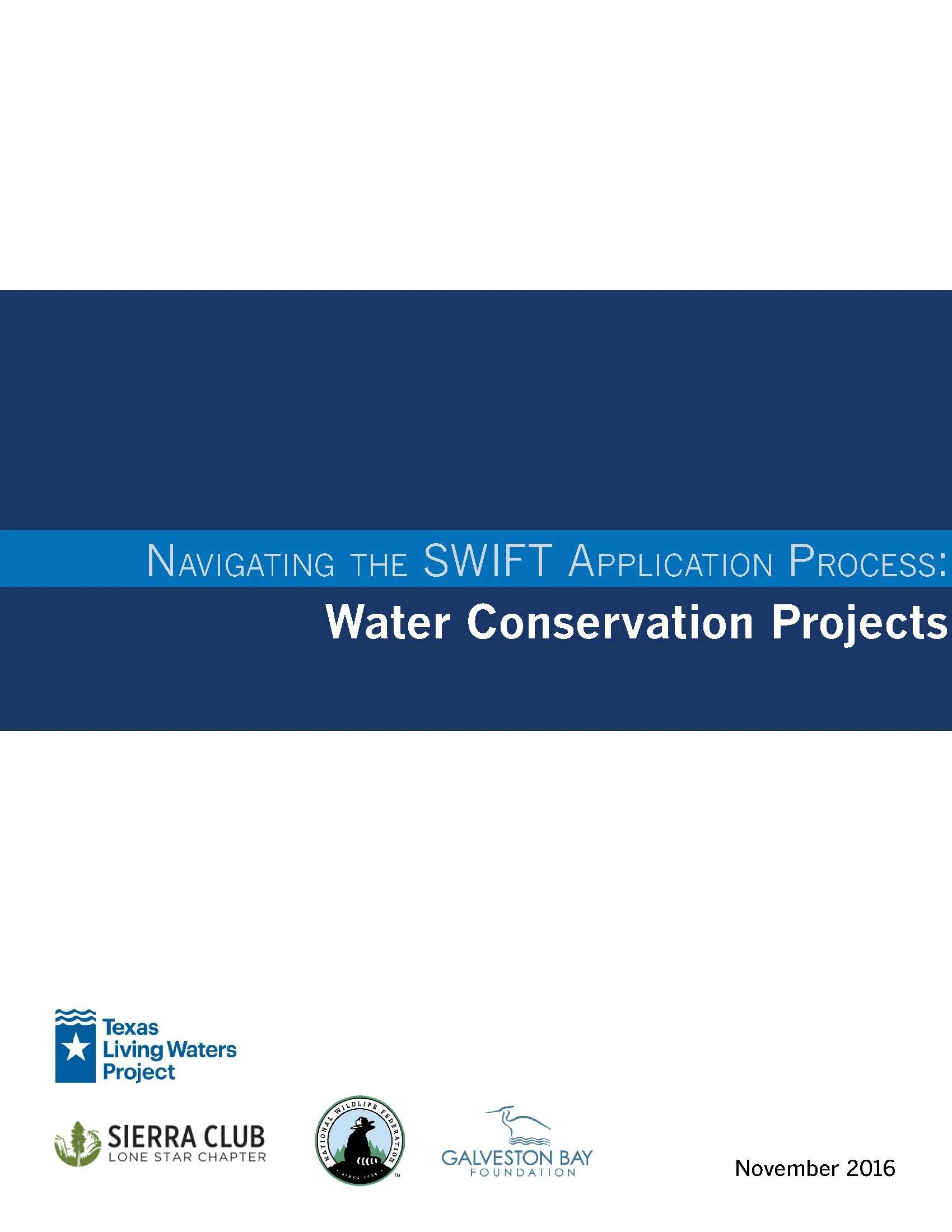This project estimates the potential for residential and commercial, industrial, and institutional (CII) water conservation savings in Texas water planning regions C and K.
Read MoreThe purpose of this guide is to provide best management practices and technologies that can help reduce water and wastewater costs while conserving our state’s most precious resource.
Read MoreThis report describes the results of a statewide analysis of residential outdoor watering and estimates a range of water savings.
Read MoreThis report provides an assessment of agricultural and municipal water conservation issues; conservation efforts by the Texas Water Development Board, the Texas State Soil and Water Conservation Board, and municipalities receiving financial assistance; a discussion of future conservation needs; an analysis of programmatic approaches and funding for additional conservation efforts; an assessment of existing statutory authority changes and whether changes are needed to more effectively promote and fund conservation projects; and an assessment of the TWDB’s Agricultural Water Conservation Program.
Read MoreThis publication provides detailed information for readers installing rainwater harvesting systems.
Read MoreThis publication describes the process by which utilities can gather, prepare, and statistically analyze customer data to create effective water conservation programs.
Read MoreThis publication describes a process for utilities to characterize their customers in order to make targeted conservation programming quicker and easier.
Read MoreThin soils, hot weather and periodic droughts punctuated by torrential downpours make gardening in Central and South Texas a challenge. Incorporate LCRA’s WaterSmart landscape guidelines to plan and create a well-designed, water-efficient landscape.
Read MoreThe Texas case study considers the statewide economic impacts of $2 billion of investment in a broad range of
urban water conservation programs addressing indoor and outdoor water uses in the residential, commercial,
and industrial sectors, including programs to replace old, water-wasting toilets, programs to upgrade
inefficient landscape irrigation systems, programs to improve commercial kitchen water use efficiency,
programs to increase industrial process water use efficiency, and programs to reduce water losses within
water distribution networks.
What explains local policy response to extreme events? This question takes on growing importance as climate change increases the frequency of droughts, floods, heat waves, wildfires, and severe storms. Emergency events like these often require local officials to make decisions that trade off short-term risk reduction against longer-term political costs. Policies that promote community-wide safety and resilience may face opposition because they restrict resource use or otherwise limit personal activities. Using data on the adoption of local water usage restrictions during the 2010–2013 Texas drought, we examine the balance between political and problem-driven incentives for local emergency response. We find that problem conditions and institutional capacity of water systems outweigh political interests in shaping the timing of policy response.
Read MoreThis document was created to provide insight and direction to water utilities seeking financial assistance for their water conservation projects under the Texas Water Development Board’s State Water Implementation Fund for Texas (SWIFT).
Read MoreThis publication reviews over 300 water utilities in Texas to assess their efforts to advance water conservation.
Read MoreThe Texas Water Conservation Advisory Council's Report to the Legislature on the progress of water conservation in Texas.
Read MoreThis activity is designed for students to analyze water use at their schools and to raise awareness about water conservation, correlating with TEKS 112.37 and 112.36.
Read MoreThis report analyzes municipal water use data and non-revenue water estimates to estimate commercial and institutional per capita water use.
Read MoreFacts about Texas water and simple steps to appreciate, conserve and protect our most valuable resource.
Read More



















